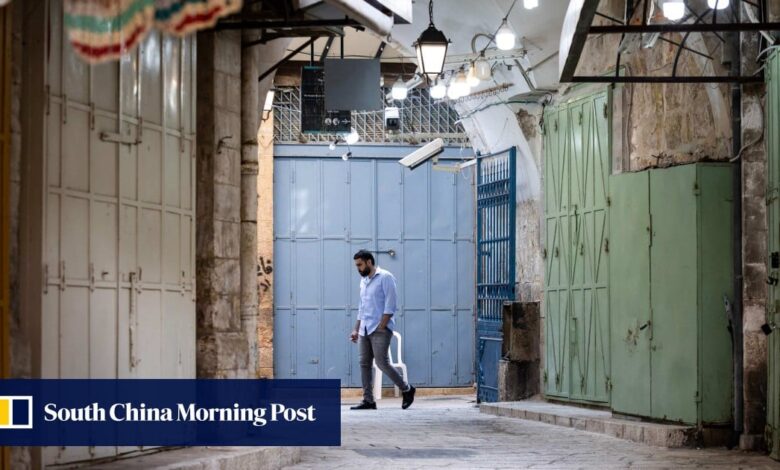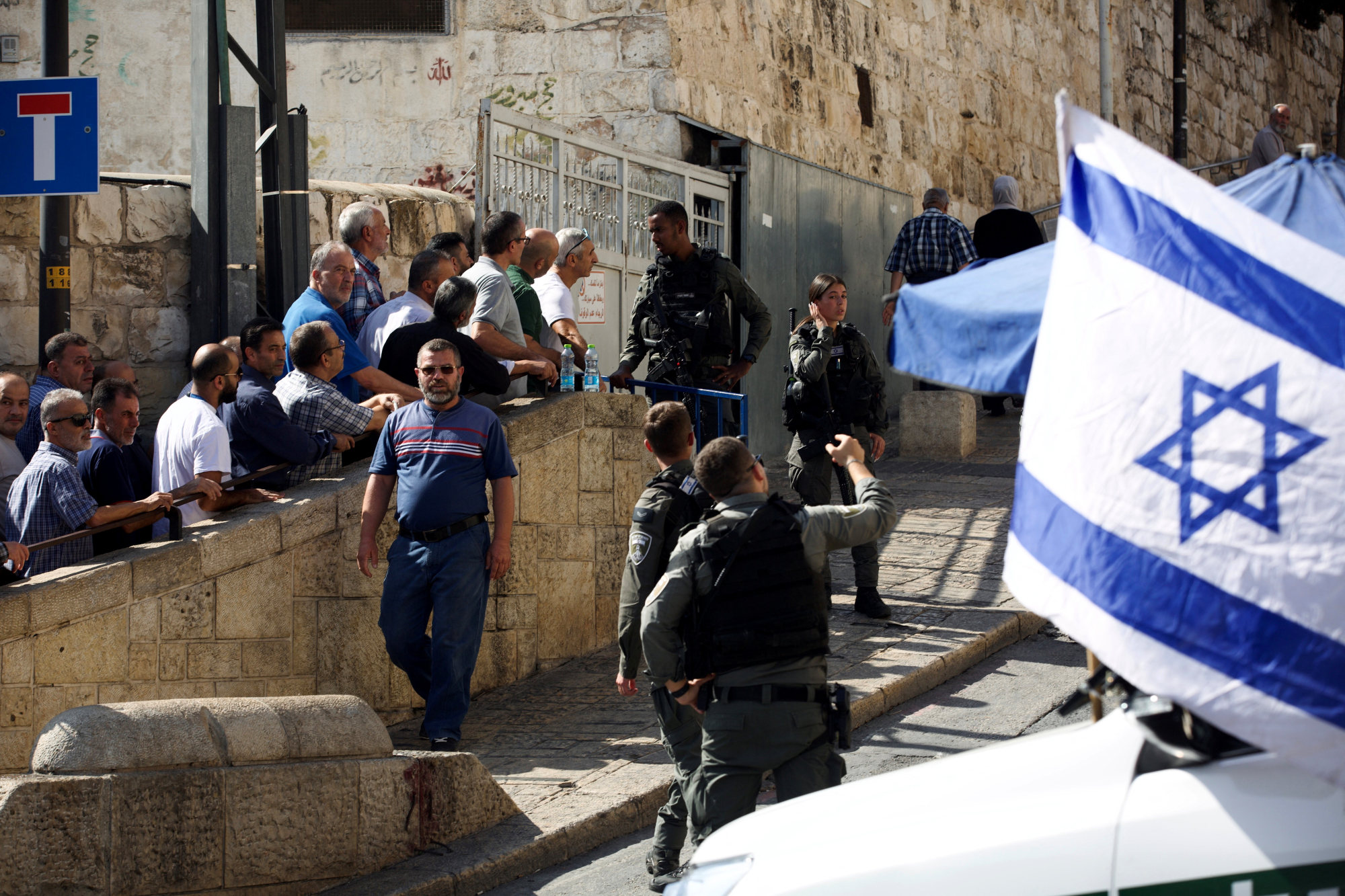‘No income, no life’: Jerusalem’s Old City suffers as Israel-Gaza war rages

[ad_1]
“We have families, we have children … [There is] no business, no income, no revenue, no life. How can you spend money, if you don’t have money?”

The walled Old City in annexed east Jerusalem is home to some of the holiest sites for Christians, Jews and Muslims and has drawn pilgrims and travellers for centuries.
Yet Jerusalem’s lucrative tourism sector has all but collapsed since October 7, when Hamas militants from Gaza stormed across the border in an attack that killed at least 1,400 people, according to Israeli officials.
Following the onslaught, Israel has struck back hard at the Hamas-controlled Gaza Strip with a relentless bombing campaign that has killed more than 9,000 people, mainly civilians, according to the territory’s Hamas-run health ministry.
The Church of the Holy Sepulchre, where most Christians believe Jesus was crucified and buried, stood largely empty on Thursday, other than the occasional priest stirring in its cavernous halls.
“Before, this place was really alive, full of people praying and offering their problems to God and in general very spiritual,” said Pietro Mazzocco, a 31-year-old Italian seminary student studying in Jerusalem.
“And now it’s completely empty, as you can see here. There are no people.”

While many flights to Israel have been suspended and tour packages cancelled, a few tourists managed to reach the largely deserted Old City.
Rachid, a 24-year-old French tourist, refused to cancel his trip to Israel, saying he wanted to see the situation on the ground with his own eyes.
He arrived earlier this week via the land border from Jordan, following lengthy interrogation sessions by Israeli authorities.
“It’s a bit weird, nobody is in the streets,” he said, adding that he had been stopped several times by Israeli police since arriving.
“People are afraid on both sides,” he shrugged. “People are sensitive. They don’t know who I am or where I’m from.”

Outside the tourism bubble, daily life has also taken a hit.
Attendances at Friday prayers at the Al-Aqsa Mosque are down, while checkpoints and patrols in occupied east Jerusalem have been strengthened.
Many residents of the mostly Palestinian-populated Old City are afraid to leave their homes, citing harassment and physical violence by Israeli security forces.
In the nearby West Bank, the number of deaths of Palestinians has surged amid a flurry of Israeli operations, with more than 130 killed in clashes with the military and settlers.
On Wednesday, a general strike was called in solidarity with the residents of the besieged Gaza Strip, with businesses closing across the West Bank, including east Jerusalem.

On Thursday, many shop owners declined to speak to AFP out of concern for their personal security.
“It’s a dangerous time. It’s not safe,” said Emad Sideyyi, a shopkeeper in the Old City.
“The soldiers, they kick everybody,” he said. “They don’t deal in a good way with people.”
For most, the war cannot end soon enough.
But with Israeli Prime Minister Benjamin Netanyahu vowing that a ceasefire with Hamas remained off the table, despair appeared only to be deepening.
“We hope to have a peace for everybody,” Sideyyi said. “We don’t want to kill each other like animals. We need to live.”
[ad_2]
Source link





